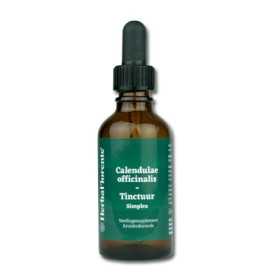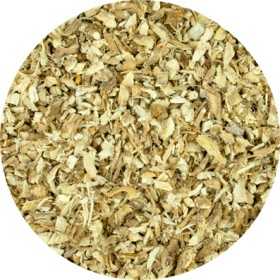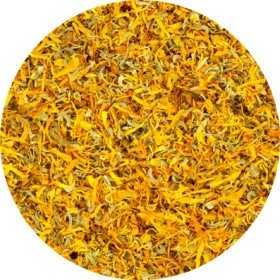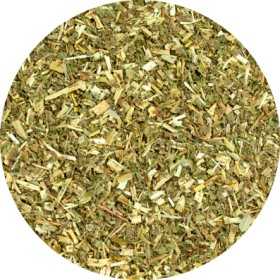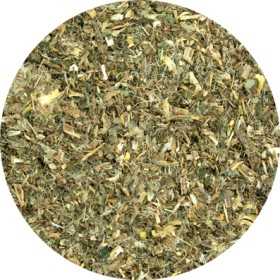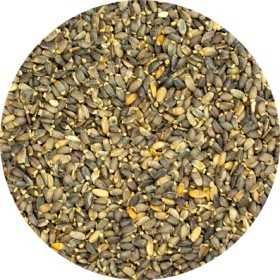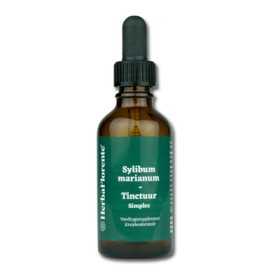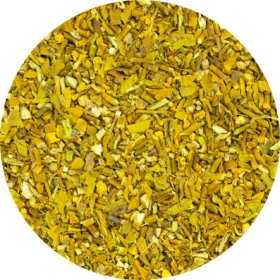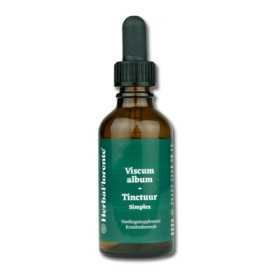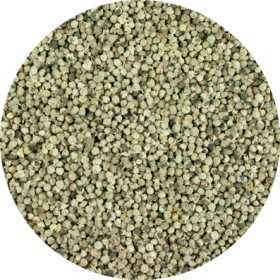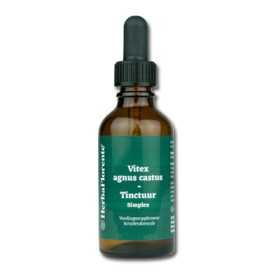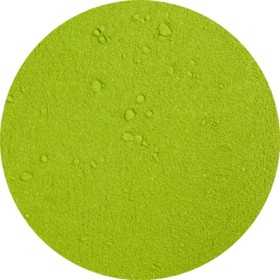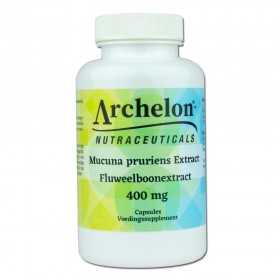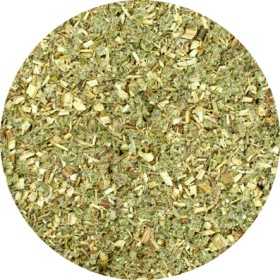Health Goals
There are 391 products.
Manganese gluconate - 10 mg
Contains organic manganese gluconate. Essential trace element and co-factor of important enzymes.
€15.95
Marigold Tincture - Calendulae officinalis Tincture
Single herbal tincture made with dried flower of Calendulae officinalis (marigold).
The marigold (Calendula officinalis) is a member of the composite family (Compositae or Asteraceae) and is often grown in ornamental gardens. This plant originally comes from Southern Europe.
It is an annual plant that usually bears orange, but sometimes yellow flowers. The marigold usually grows to a height of 30-45 cm and has blunt leaves. Its flowering period extends from May to November, while the fruits are often curved and boat-shaped.
Both fresh and dried flowers can be used in soups, and they also act as a natural coloring for cheese, butter and other foods. Historically, the petals were even used to imitate saffron.
The marigold (Calendula officinalis) is a member of the composite family (Compositae or Asteraceae) and is often grown in ornamental gardens. This plant originally comes from Southern Europe.
It is an annual plant that usually bears orange, but sometimes yellow flowers. The marigold usually grows to a height of 30-45 cm and has blunt leaves. Its flowering period extends from May to November, while the fruits are often curved and boat-shaped.
Both fresh and dried flowers can be used in soups, and they also act as a natural coloring for cheese, butter and other foods. Historically, the petals were even used to imitate saffron.
€9.95
Marshmallow (Leaf) - Altheae officinalis
Marshmallow (Althaea officinalis) belongs to the mallow family (Malvaceae) and has been spread worldwide by human activity, especially to areas with suitable soil, humidity and climate.
The starch in the carrot, mixed with proteinaceous substances, was formerly used in making marshmallows and bacon. The leaves can be eaten cooked and the flowers can be used raw in salads.
Marshmallow root has a soothing effect on the respiratory tract (source WHO) and is used in cough syrups.
The starch in the carrot, mixed with proteinaceous substances, was formerly used in making marshmallows and bacon. The leaves can be eaten cooked and the flowers can be used raw in salads.
Marshmallow root has a soothing effect on the respiratory tract (source WHO) and is used in cough syrups.
€2.00
From: €2.00
Marshmallow (Root) - Althaea officinalis
Marshmallow (Althaea officinalis) belongs to the mallow family (Malvaceae) and has been spread worldwide by human activity, especially to areas with suitable soil, humidity and climate.
The starch in the carrot, mixed with proteinaceous substances, was formerly used in making marshmallows and bacon. The leaves can be eaten cooked and the flowers can be used raw in salads.
Marshmallow root has a soothing effect on the respiratory tract (source WHO) and is used in cough syrups.
The starch in the carrot, mixed with proteinaceous substances, was formerly used in making marshmallows and bacon. The leaves can be eaten cooked and the flowers can be used raw in salads.
Marshmallow root has a soothing effect on the respiratory tract (source WHO) and is used in cough syrups.
€2.50
From: €2.50
Marshmallow - Althaea officinalis
Marshmallow (Althaea officinalis) belongs to the mallow family (Malvaceae) and has been spread worldwide by human activity, especially to areas with suitable soil, humidity and climate.
The starch in the carrot, mixed with proteinaceous substances, was formerly used in making marshmallows and bacon. The leaves can be eaten cooked and the flowers can be used raw in salads.
Marshmallow root has a soothing effect on the respiratory tract (source WHO) and is used in cough syrups.
The starch in the carrot, mixed with proteinaceous substances, was formerly used in making marshmallows and bacon. The leaves can be eaten cooked and the flowers can be used raw in salads.
Marshmallow root has a soothing effect on the respiratory tract (source WHO) and is used in cough syrups.
€2.75
From: €2.75
Marygold (Calendula) - Calendulae officinalis
The marigold (Calendula officinalis) is a member of the composite family (Compositae or Asteraceae) and is often grown in ornamental gardens. This plant originally comes from Southern Europe.
It is an annual plant that usually bears orange, but sometimes yellow flowers. The marigold usually grows to a height of 30-45 cm and has blunt leaves. Its flowering period extends from May to November, while the fruits are often curved and boat-shaped.
Both fresh and dried flowers can be used in soups, and they also act as a natural coloring for cheese, butter and other foods. Historically, the petals were even used to imitate saffron.
It is an annual plant that usually bears orange, but sometimes yellow flowers. The marigold usually grows to a height of 30-45 cm and has blunt leaves. Its flowering period extends from May to November, while the fruits are often curved and boat-shaped.
Both fresh and dried flowers can be used in soups, and they also act as a natural coloring for cheese, butter and other foods. Historically, the petals were even used to imitate saffron.
€2.40
From: €2.40
Meadowsweet - Filipendulae ulmaria
The meadowsweet (Filipendula ulmaria) is a perennial plant belonging to the rose family (Rosaceae). It is an erect plant that can reach a height of 0.6 to 2 meters. The flowers of the meadowsweet are numerous and cream-colored, with a width of 0.4 to 1 cm and each consisting of five petals, which have a strong almond scent. The leaves are pinnately compound, with a large top leaflet that is palmately split.
In the past, meadowsweet was used as a remedy for biliary and kidney diseases, as well as for gout and nerve pain. The dried leaves and flowers were used to make tea, which was given for fever.
In the past, meadowsweet was used as a remedy for biliary and kidney diseases, as well as for gout and nerve pain. The dried leaves and flowers were used to make tea, which was given for fever.
€2.00
From: €2.00
Meadowsweet Tincture - Filipendulae ulmaria Tincture
Single herbal tincture made with dried herb of Filipendulae ulmaria (Meadsweet).
The meadowsweet (Filipendula ulmaria) is a perennial plant belonging to the rose family (Rosaceae). It is an erect plant that can reach a height of 0.6 to 2 meters. The flowers of the meadowsweet are numerous and cream-colored, with a width of 0.4 to 1 cm and each consisting of five petals, which have a strong almond scent. The leaves are pinnately compound, with a large top leaflet that is palmately split.
In the past, meadowsweet was used as a remedy for biliary and kidney diseases, as well as for gout and nerve pain. The dried leaves and flowers were used to make tea, which was given for fever.
The meadowsweet (Filipendula ulmaria) is a perennial plant belonging to the rose family (Rosaceae). It is an erect plant that can reach a height of 0.6 to 2 meters. The flowers of the meadowsweet are numerous and cream-colored, with a width of 0.4 to 1 cm and each consisting of five petals, which have a strong almond scent. The leaves are pinnately compound, with a large top leaflet that is palmately split.
In the past, meadowsweet was used as a remedy for biliary and kidney diseases, as well as for gout and nerve pain. The dried leaves and flowers were used to make tea, which was given for fever.
€10.95
Melatonin - 290 mcg
Melatonin is a neurotransmitter that falls under the hormones or more specifically called a neurohormone. Melatonin ensures that we get a good night's sleep. Melatonin also has various other properties in the body.
€9.95
Menstrual Cramp Herbal Tea
Herbal tea composed of various herbs
For support with menstrual cramps
For support with menstrual cramps
€3.95
Milk Thistle (Herb) - Sylibum marianum, Cardui Mariae - Cut
Milk thistle (Silybum marianum), also known as milk thistle or milk thistle, is a spiny plant native to the Mediterranean region, but which also grows in our area. It belongs to the composite family. Milk thistle has been used for centuries as a natural remedy to support liver and bile function. It can be used as part of a cleansing regimen to assist the liver in the detoxification process.
€2.00
From: €2.00
Milk Thistle (Seed) - Sylibum marianum, Cardui Mariae
Milk thistle (Silybum marianum), also known as milk thistle or milk thistle, is a spiny plant native to the Mediterranean region, but which also grows in our area. It belongs to the composite family. Milk thistle has been used for centuries as a natural remedy to support liver and bile function. It can be used as part of a cleansing regimen to assist the liver in the detoxification process.
The seeds of milk thistle contain silymarin, a powerful antioxidant. Silymarin stimulates the liver in the natural detoxification process and thus supports liver function.
The seeds of milk thistle contain silymarin, a powerful antioxidant. Silymarin stimulates the liver in the natural detoxification process and thus supports liver function.
€2.00
From: €2.00
Milk Thistle (Seed) - Sylibum marianum, Cardui Mariae - Whole
Milk thistle (Silybum marianum), also known as milk thistle or milk thistle, is a spiny plant native to the Mediterranean region, but which also grows in our area. It belongs to the composite family. Milk thistle has been used for centuries as a natural remedy to support liver and bile function. It can be used as part of a cleansing regimen to assist the liver in the detoxification process.
The seeds of milk thistle contain silymarin, a powerful antioxidant. Silymarin stimulates the liver in the natural detoxification process and thus supports liver function.
The seeds of milk thistle contain silymarin, a powerful antioxidant. Silymarin stimulates the liver in the natural detoxification process and thus supports liver function.
€2.00
From: €2.00
Milk Thistle - 450 mg
Milk thistle (Silybum marianum), also known as milk thistle or milk thistle, is a spiny plant native to the Mediterranean region, but which also grows in our area. It belongs to the composite family. Milk thistle has been used for centuries as a natural remedy to support liver and bile function. It can be used as part of a cleansing regimen to assist the liver in the detoxification process.
The seeds of milk thistle contain silymarin, a powerful antioxidant. Silymarin stimulates the liver in the natural detoxification process and thus supports liver function.
The seeds of milk thistle contain silymarin, a powerful antioxidant. Silymarin stimulates the liver in the natural detoxification process and thus supports liver function.
€17.95
Milk Thistle Tincture - Sylibum marianum (Cardui Mariae) Tincture
Single herbal tincture made with dried seed of Sylibum marianum (Cardui Mariae) (Milk thistle).
Milk thistle (Silybum marianum), also known as milk thistle or milk thistle, is a spiny plant native to the Mediterranean region, but which also grows in our area. It belongs to the composite family. Milk thistle has been used for centuries as a natural remedy to support liver and bile function. It can be used as part of a cleansing regimen to assist the liver in the detoxification process.
The seeds of milk thistle contain silymarin, a powerful antioxidant. Silymarin stimulates the liver in the natural detoxification process and thus supports liver function.
Milk thistle (Silybum marianum), also known as milk thistle or milk thistle, is a spiny plant native to the Mediterranean region, but which also grows in our area. It belongs to the composite family. Milk thistle has been used for centuries as a natural remedy to support liver and bile function. It can be used as part of a cleansing regimen to assist the liver in the detoxification process.
The seeds of milk thistle contain silymarin, a powerful antioxidant. Silymarin stimulates the liver in the natural detoxification process and thus supports liver function.
€9.95
Mistletoe - Viscum alba
Mistletoe (Viscum album) is an evergreen plant belonging to the sandalwood family, known by various names such as mistletoe, mistletoe, or birdlime. Mistletoe naturally occurs in Europe, Northwest Africa, West and Central Asia. It is a semi-parasite that thrives in the wild on numerous host species.
Over the centuries, mistletoe has become intertwined with numerous legends and symbolic meanings. To the Druids, the mistletoe of an oak tree was sacred and associated with ushering in the new year, symbolic of fertility and good luck. In Norse mythology, mistletoe symbolizes peace and love, with people who meet under it kissing each other as a sign of this peace and love.
Over the centuries, mistletoe has become intertwined with numerous legends and symbolic meanings. To the Druids, the mistletoe of an oak tree was sacred and associated with ushering in the new year, symbolic of fertility and good luck. In Norse mythology, mistletoe symbolizes peace and love, with people who meet under it kissing each other as a sign of this peace and love.
€2.00
From: €2.00
Mistletoe Tincture - Viscum album Tincture
Single herbal tincture made with dried herb of Viscum album (Mistletoe).
Mistletoe (Viscum album) is an evergreen plant belonging to the sandalwood family, known by various names such as mistletoe, mistletoe, or birdlime. Mistletoe naturally occurs in Europe, Northwest Africa, West and Central Asia. It is a semi-parasite that thrives in the wild on numerous host species.
Mistletoe (Viscum album) is an evergreen plant belonging to the sandalwood family, known by various names such as mistletoe, mistletoe, or birdlime. Mistletoe naturally occurs in Europe, Northwest Africa, West and Central Asia. It is a semi-parasite that thrives in the wild on numerous host species.
€9.95
Monk's Pepper - Vitex agnus castus
Monk's pepper (Vitex agnus castus L.) grows naturally in countries around the Mediterranean. It is known as monk's pepper or chaste tree berries and is prized as a spice in this region.
Monks who had taken a vow of chastity once used this herb to suppress their physical desires, due to its supposed dampening effect on libido. This explains the Dutch name monk's pepper.
Nowadays, Vitex agnus is especially popular among women who want to support their hormonal system around menstruation or menopause. It can relieve discomfort during menstruation and also helps with menopausal symptoms such as hot flashes, mood swings and irritability. Moreover, vitex agnus contributes to a good mental balance.
Monks who had taken a vow of chastity once used this herb to suppress their physical desires, due to its supposed dampening effect on libido. This explains the Dutch name monk's pepper.
Nowadays, Vitex agnus is especially popular among women who want to support their hormonal system around menstruation or menopause. It can relieve discomfort during menstruation and also helps with menopausal symptoms such as hot flashes, mood swings and irritability. Moreover, vitex agnus contributes to a good mental balance.
€2.00
From: €2.00
Monk's Pepper Tincture - Vitex agnus castus Tincture
Monk's pepper (Vitex agnus castus L.) grows naturally in countries around the Mediterranean. It is known as monk's pepper or chaste tree berries and is prized as a spice in this region.
Monks who had taken a vow of chastity once used this herb to suppress their physical desires, due to its supposed dampening effect on libido. This explains the Dutch name monk's pepper.
Nowadays, Vitex agnus is especially popular among women who want to support their hormonal system around menstruation or menopause. It can relieve discomfort during menstruation and also helps with menopausal symptoms such as hot flashes, mood swings and irritability. Moreover, vitex agnus contributes to a good mental balance.
Monks who had taken a vow of chastity once used this herb to suppress their physical desires, due to its supposed dampening effect on libido. This explains the Dutch name monk's pepper.
Nowadays, Vitex agnus is especially popular among women who want to support their hormonal system around menstruation or menopause. It can relieve discomfort during menstruation and also helps with menopausal symptoms such as hot flashes, mood swings and irritability. Moreover, vitex agnus contributes to a good mental balance.
€9.95
Moringa oleifera - 300 mg
Moringa oleifera, also known as the 'tree of life', thrives in Africa and Asia and is known for its rich nutritional value. The tree is a treasure trove of more than dozens of nutrients, including no fewer than 47 antioxidants. Containing minerals, proteins, vitamins, beta-carotene, amino acids and various phenols in abundance, the leaves of the moringa are the true storehouse of nutritional value.
For centuries, Asian and African cultures have recognized the benefits of moringa oleifera. The tree has become an integral part of their daily diet due to its versatile uses and nutritional value. Because of its abundant benefits, moringa oleifera is often affectionately referred to as "the tree of life."
For centuries, Asian and African cultures have recognized the benefits of moringa oleifera. The tree has become an integral part of their daily diet due to its versatile uses and nutritional value. Because of its abundant benefits, moringa oleifera is often affectionately referred to as "the tree of life."
€19.95
Moringa Tree - Moringa oleifera (Leaf Grounded)
Moringa oleifera, also known as the 'tree of life', thrives in Africa and Asia and is known for its rich nutritional value. The tree is a treasure trove of more than dozens of nutrients, including no fewer than 47 antioxidants. Containing minerals, proteins, vitamins, beta-carotene, amino acids and various phenols in abundance, the leaves of the moringa are the true storehouse of nutritional value.
For centuries, Asian and African cultures have recognized the benefits of moringa oleifera. The tree has become an integral part of their daily diet due to its versatile uses and nutritional value. Because of its abundant benefits, moringa oleifera is often affectionately referred to as "the tree of life."
For centuries, Asian and African cultures have recognized the benefits of moringa oleifera. The tree has become an integral part of their daily diet due to its versatile uses and nutritional value. Because of its abundant benefits, moringa oleifera is often affectionately referred to as "the tree of life."
€3.20
From: €3.20
MSM (Methylsulfonylmethane) - 550mg
MSM, full name methylsulfonylmethane, is an odorless, white crystalline powder that is soluble in water and is an important nutrient. It is an organic compound of sulfur that occurs both in our food and in our bodies. This compound, which naturally contains sulfur, plays an essential role in various body processes and is involved in the formation of more than 150 different substances.
The special thing about MSM is that it is a very easily absorbable form of sulfur. This compound contributes to the flexibility of the connections between cells, especially in tissues that naturally contain a lot of sulfur. Therefore, MSM can be beneficial for the hair, nails, joints, tendons, cartilage and ligaments.
The special thing about MSM is that it is a very easily absorbable form of sulfur. This compound contributes to the flexibility of the connections between cells, especially in tissues that naturally contain a lot of sulfur. Therefore, MSM can be beneficial for the hair, nails, joints, tendons, cartilage and ligaments.
€23.95
Mucuna pruriens Extract - Velvet Bean Extract - 400 mg
Mucuna pruriens, also known as the velvet bean, has been an essential part of traditional Ayurvedic medicine in India for thousands of years. This special plant not only supports the nervous system and helps maintain emotional balance, but is also a natural aid for both men and women for libido. In addition, Mucuna pruriens contributes to a healthy menstrual cycle and supports normal testosterone levels. With its powerful antioxidants, it also strengthens the immune system.
The Mucuna pruriens capsules are completely plant-based and therefore suitable for vegetarians and vegans. Discover the ancient Ayurvedic secrets and experience the powerful benefits of this unique bean for yourself!
The Mucuna pruriens capsules are completely plant-based and therefore suitable for vegetarians and vegans. Discover the ancient Ayurvedic secrets and experience the powerful benefits of this unique bean for yourself!
€29.95
Mugwort - Artemisiae vulgaris - Cut
The mugwort (Artemisia vulgaris) is a plant from the composite family (Asteraceae), related to wormwood. This weakly aromatic plant has leaves that have white felt-like hairs on the underside. Mugwort is widespread in Belgium and the Netherlands, often found on wasteland and along roads. The plant thrives best in sandy soil. The stem is 60–120 cm long and often shows a reddish color.
In ancient times, the Romans put mugwort in their footwear to relieve fatigue and pain. In central Mongolia, where the population used to suffer from clouds of large mosquitoes (the size of small shrimps), the Mongolian mugwort (with its characteristic bluish, hairy, succulent leaves) was used to repel these mosquitoes in the damp lawns.
In ancient times, the Romans put mugwort in their footwear to relieve fatigue and pain. In central Mongolia, where the population used to suffer from clouds of large mosquitoes (the size of small shrimps), the Mongolian mugwort (with its characteristic bluish, hairy, succulent leaves) was used to repel these mosquitoes in the damp lawns.
€2.00
From: €2.00
















